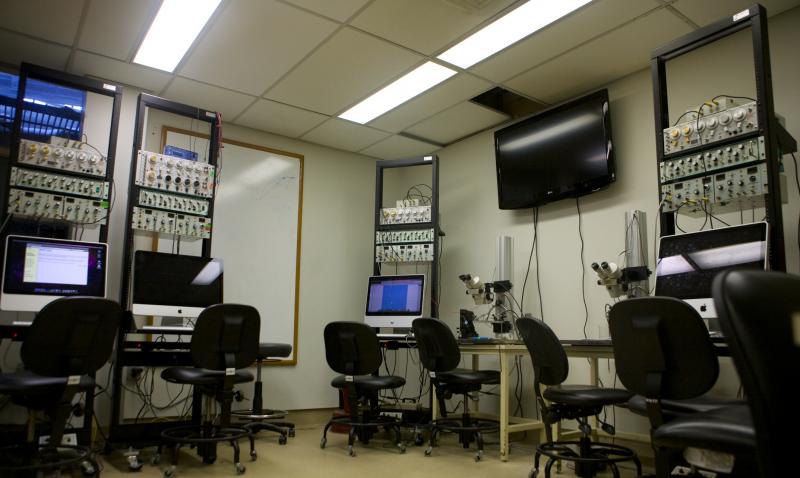 The Neuroscience Program makes use of classrooms all over the University, but has its home base in the Levin Building, with classrooms and offices for the Neuroscience Program Director, Associate Director, Lecturers and Program Coordinator (Room 122). This is also where students go for Neuroscience Program Advising, available either walk-in or by appointment. The Levin Building also houses offices for many of the Neuroscience Program’s core faculty.
The Neuroscience Program makes use of classrooms all over the University, but has its home base in the Levin Building, with classrooms and offices for the Neuroscience Program Director, Associate Director, Lecturers and Program Coordinator (Room 122). This is also where students go for Neuroscience Program Advising, available either walk-in or by appointment. The Levin Building also houses offices for many of the Neuroscience Program’s core faculty.

Neurolab
Our most unusual and specialized teaching space is the Neurolab, a roomful of wires and equipment with 10 fully functioning stations for a variety of electrophysiological experiments using intra- and extracellular recording with sharp and suction electrodes. Electrical activity is one of the features of neurons that make neuronal signaling possible, and these are the tools we use to observe this activity directly. All stations have digital data acquisition to computers which are also used for software simulations and other exercises. The Neurolab is used for three NRSC/BIBB courses: Cellular Neurobiology (NRSC 2110/BIBB251), Experimental Methods in Synaptic Physiology (NRSC 3492/BIBB492), and most recently Music and the Brain (NRSC 0060/BIBB060), a freshman seminar. The Neurolab also plays host to other groups interested in learning about how these kinds of experiments are conducted, ranging from elementary and high school groups to Neuroscience Boot Camp, a summer program for lawyers, writers, educators and other professionals who want to learn about the impact of neuroscience on their respective fields.

Acknowledgments:
About the banner: More than perhaps any other field, neuroscience operates at multiple levels of analysis and description. Students in our department do research ranging from cellular and molecular studies to cognitive psychology. From left to right: A. The molecular structure of voltage-sensing region of the Shaker-A potassium channel. (Image generated by MK) B. Cultured hippocampal neurons stained to distinguish mature neurons from neuronal precursor cells. (Gyujae Choi and Marc Dichter) C. Sharp electrode recordings of Aplysia neurons from Penn’s Neurolab (Mike Kaplan) D. The brain of a zebra finch, overlaid with intracellular recordings taken from nucleus HVC of the song system during presentation of auditory stimuli (Composite picture by Marc Schmidt; neural traces by Mike Lewicki). E. Zebra finches. F. The goal of all of this research is explaining behavior, including the behavior of neuroscientists.

